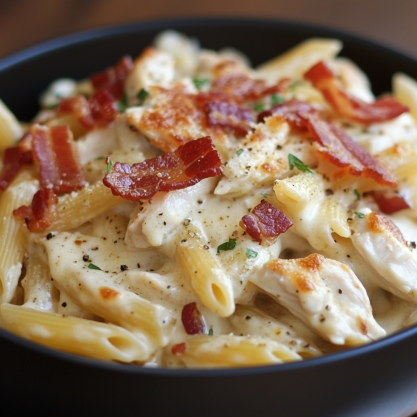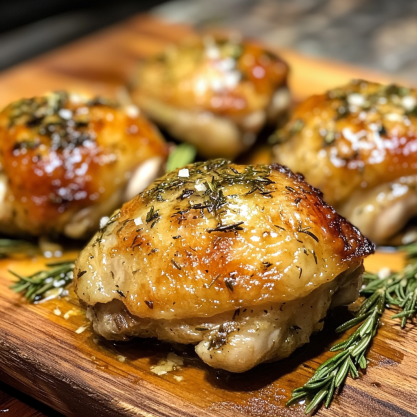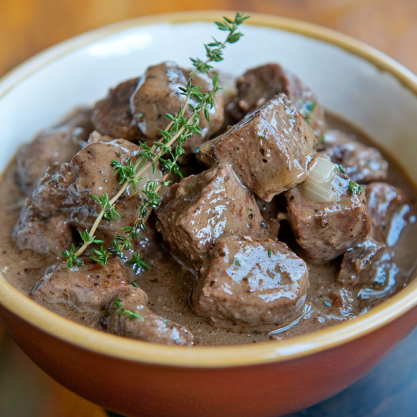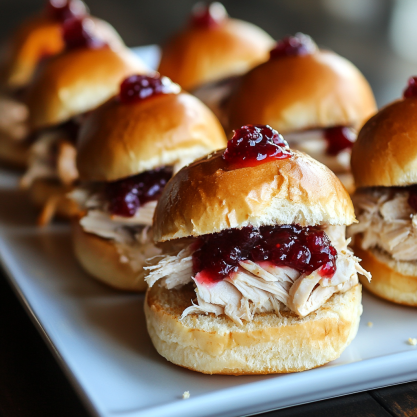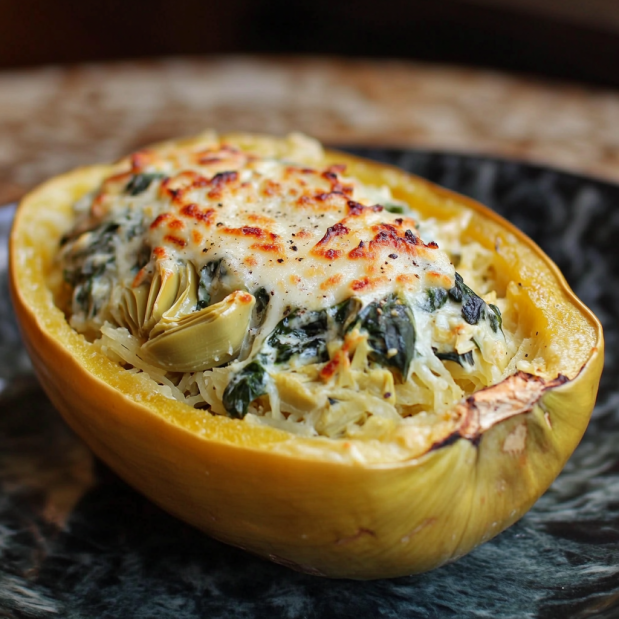Giada De Laurentiis Cacio E Pepe | Classic Recipe
Explore Italian cuisine with Giada De Laurentiis’ cacio e pepe. This beloved pasta recipe is all about simplicity. Giada makes this Roman classic even better.
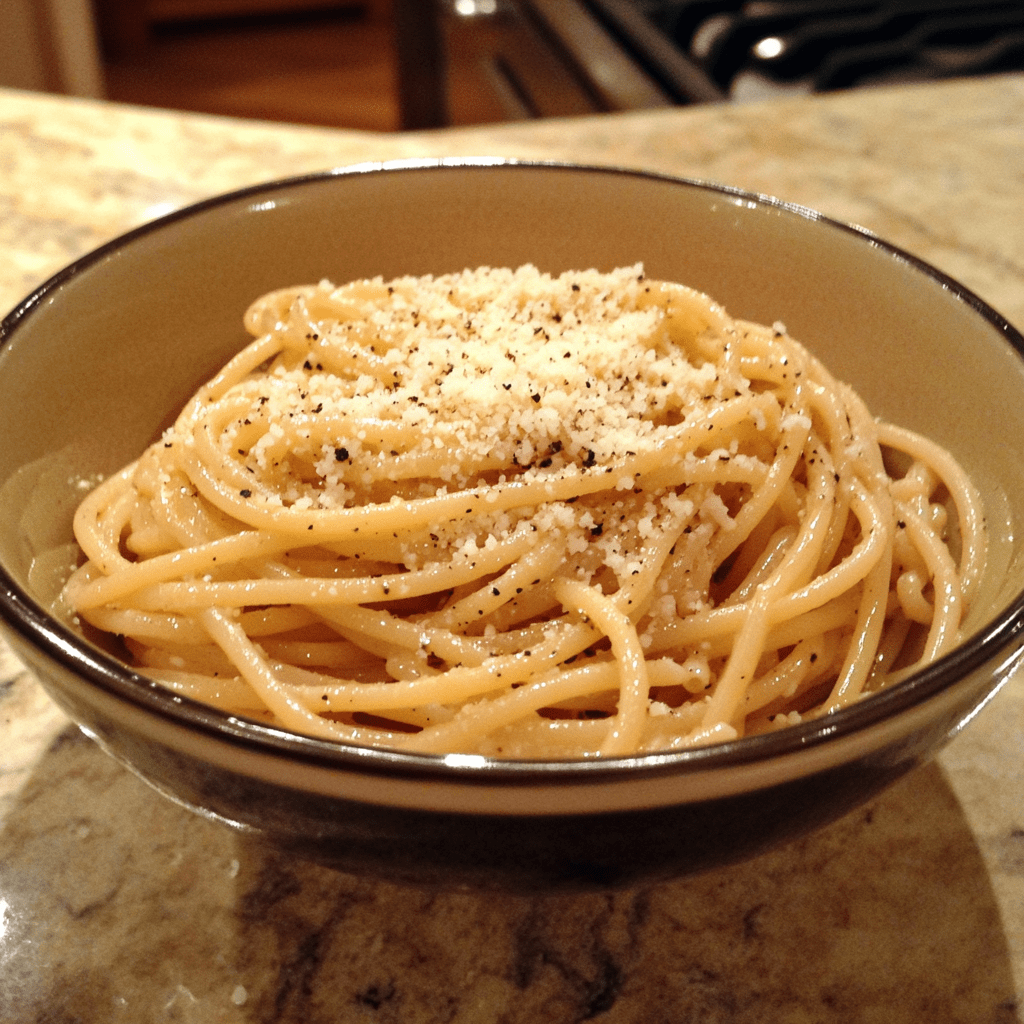
Cacio e pepe, or “cheese and pepper,” is a key dish in Italian cooking. It’s made with just a few ingredients but is incredibly flavorful. Giada De Laurentiis adds her own twist, making it easy for anyone to make at home.
Prepare to enjoy the perfect mix of creamy cheese and spicy black pepper. Giada’s cacio e pepe will take you on a culinary journey to Rome.
The Story Behind Giada De Laurentiis Cacio E Pepe
Cacio e Pepe is a beloved dish in Rome. It’s simple yet full of flavor. Food lovers and celebrity chefs adore it. Giada De Laurentiis, a famous Food Network star, has made it even more popular.
Roman Culinary Heritage
This dish comes from ancient Rome. Shepherds carried dried pasta, aged pecorino cheese, and black peppercorns. These items were easy to carry and made a tasty meal.
Giada’s Personal Connection
Giada De Laurentiis grew up in Rome. Cacio e Pepe was a favorite in her family’s kitchen. Her grandfather’s cooking sparked her love for Italian food. She shares this recipe, introducing many to Roman cuisine’s beauty.
From Street Food to Fine Dining
Once street food, Cacio e Pepe is now a fine dining favorite. Celebrity chefs have made it special with top ingredients and creative ways to serve it. Food Network stars often feature it, making it a culinary icon.
“Cacio e Pepe is the essence of Roman cuisine – simple, bold, and unforgettable,” Giada De Laurentiis often says.
Giada’s Cacio e Pepe honors its roots while showing its modern appeal. Her recipe inspires both home cooks and chefs. It keeps this timeless dish alive for generations to come.
Essential Ingredients for Authentic Cacio e Pepe
Cacio e Pepe is a standout in Italian cuisine. It’s a simple yet flavorful dish. It only needs a few ingredients to make its unique taste.
Selecting the Perfect Pecorino Romano
The cheese is the heart of Cacio e Pepe. Choose a high-quality Pecorino Romano for its sharp, salty taste. Make sure it’s aged at least 8 months for the best flavor.
Avoid pre-grated cheese. It doesn’t have the richness of freshly grated cheese.
Black Pepper Selection and Preparation
Black pepper is key in this dish. Use whole peppercorns and grind them fresh. This brings out aromatic oils, making the pasta taste better.
Choose Tellicherry peppercorns for their complex taste.
Choosing the Right Pasta Type
The pasta shape is important in Cacio e Pepe. Long, thick noodles work best. Try these options:
- Tonnarelli: A square-cut spaghetti native to Rome
- Spaghetti: A classic choice for this dish
- Bucatini: Thick spaghetti with a hole running through the center
These shapes help the sauce cling well. This makes every bite perfect. With these ingredients, you can make a true Italian dish at home.
Kitchen Tools and Equipment Required
Giada De Laurentiis’ Cacio e Pepe is a classic pasta recipe. It’s easy to make with the right tools. You’ll need some basic kitchen equipment to get started.
A large pot is key for boiling pasta just right. Use a colander to drain it, but save some pasta water for the sauce. A heavy-bottomed skillet or sauté pan is best for the creamy cheese sauce.
Grate the Pecorino Romano with a box grater or microplane. Don’t forget a pepper mill for freshly ground black pepper. It’s essential for the dish’s flavor.
- Wooden spoon or tongs for tossing pasta
- Measuring cups and spoons
- Sharp knife for any prep work
Recipe card
Get ready to make Giada De Laurentiis’ cacio e pepe. It’s a tasty vegetarian pasta dish that’s easy to make. This recipe card has everything you need to make this Roman classic at home.
Equipment
- Large pot for boiling pasta
- Colander
- Large skillet or sauté pan
- Wooden spoon or tongs
- Cheese grater
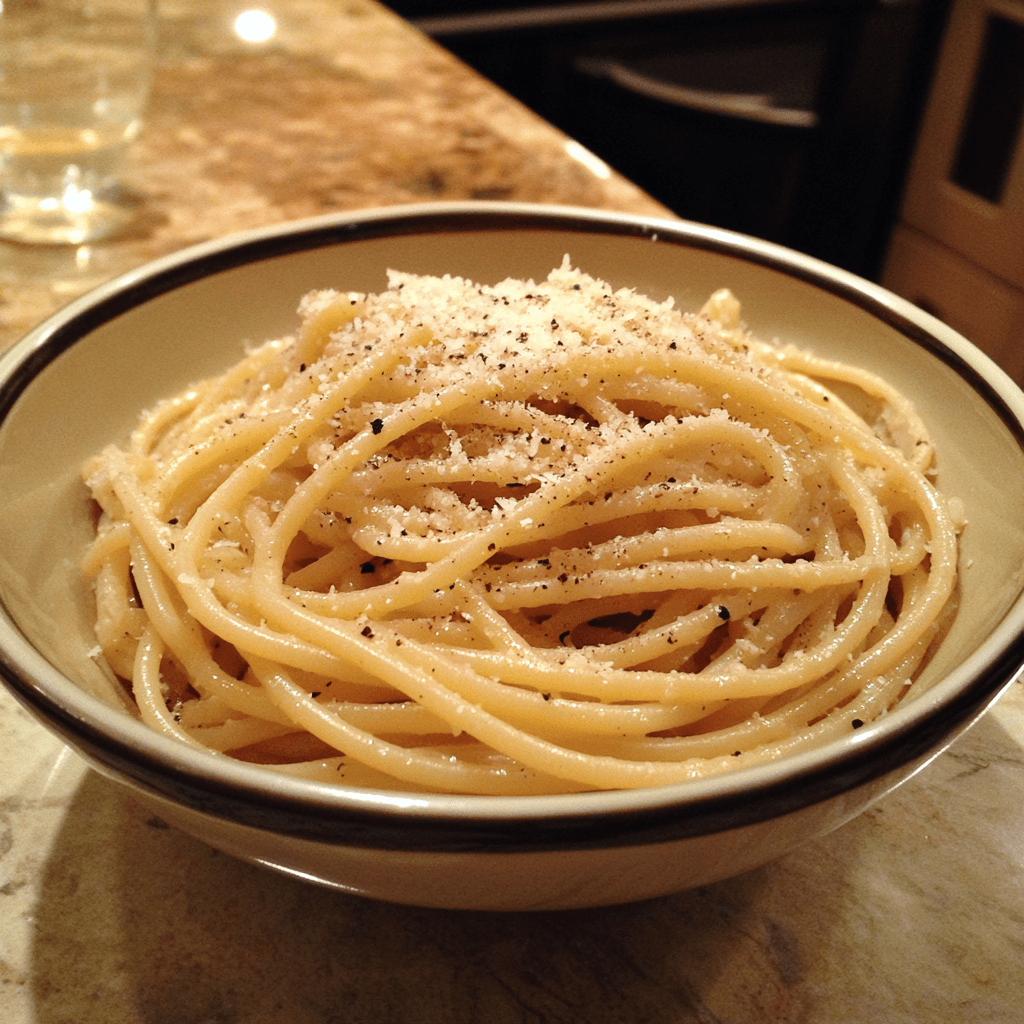
Ingredients
- 1 pound spaghetti or bucatini
- 2 cups finely grated Pecorino Romano cheese
- 2 tablespoons freshly ground black pepper
- Salt for pasta water
Instructions
- Bring a large pot of salted water to a boil. Cook pasta until al dente.
- Reserve 1 cup of pasta cooking water before draining.
- In a large skillet, toast black pepper over medium heat for 30 seconds.
- Add 1/2 cup of reserved pasta water to the skillet and bring to a simmer.
- Add cooked pasta to the skillet and toss to coat.
- Remove from heat and add grated Pecorino Romano, stirring until cheese melts.
- Add more pasta water if needed to create a creamy sauce.
- Serve immediately, garnished with extra cheese and pepper.
This Giada De Laurentiis cacio e pepe recipe shows how a few quality ingredients can make an amazing vegetarian pasta dish. The secret is in balancing the sharp Pecorino Romano with the heat of black pepper. This creates a comforting and satisfying meal.
Step-by-Step Cooking Technique
Mastering Giada’s Cacio e Pepe needs precision and detail. This classic Italian dish shows the beauty of simple pasta recipes. Let’s explore how to make this black pepper pasta masterpiece step by step.
Pasta Cooking Method
Begin by boiling a large pot of salted water. Add your pasta and cook until it’s al dente. Before draining, save a cup of pasta water. This starchy liquid is key for a silky sauce.
Creating the Perfect Cheese Sauce
In another pan, toast black pepper until it smells great. Add pasta water and simmer. Slowly mix in grated Pecorino Romano cheese, stirring constantly to avoid clumps. You should get a smooth, creamy sauce.
Incorporating Black Pepper
The secret to authentic Cacio e Pepe is its peppery flavor. Add more black pepper to taste, making sure it’s spread evenly. This step turns simple pasta into a flavorful Italian dish.
Final Assembly Tips
Combine the cooked pasta with the cheese sauce, adding pasta water as needed. Serve right away. Top with Pecorino and a sprinkle of black pepper for a fancy presentation.
“The secret to perfect Cacio e Pepe is in the emulsion of cheese, pepper, and pasta water. It’s a dance of flavors and textures.” – Giada De Laurentiis
Common Mistakes to Avoid
Making the perfect Cacio e Pepe might seem simple, but mistakes can happen. Let’s look at common errors in this classic dish. We’ll learn how to avoid them for a flawless meal.
Temperature Troubles
Managing heat is one of the toughest parts of making Cacio e Pepe. If your pan is too hot, the cheese can clump. Keep the heat low and remove the pan if needed.
This gentle approach ensures your parmesan cheese dish turns out creamy, not grainy.
Cheese Choices
Using the wrong cheese can ruin the whole recipe. Stick to Pecorino Romano for authentic flavor. Pre-grated cheese often has anti-caking agents that prevent proper melting.
Grate your cheese fresh for the best results in this and other easy Italian recipes.
Water Woes
Pasta water is key for a silky sauce. Don’t drain all the water when your pasta is done cooking. Reserve at least a cup to help emulsify the cheese.
This creates that signature creamy texture that makes Cacio e Pepe a favorite among parmesan cheese dishes.
“The secret to perfect Cacio e Pepe lies in the details – temperature, cheese quality, and pasta water. Master these, and you’ll create a dish worthy of a Roman trattoria.”
By avoiding these common pitfalls, you’ll be well on your way to mastering this beloved Italian classic. Remember, practice makes perfect when it comes to easy Italian recipes like Cacio e Pepe.
Serving and Presentation Tips
Giada De Laurentiis, a beloved Food Network star, offers expert advice on serving Cacio e Pepe. This dish, simple yet elegant, deserves a presentation that matches its rich flavors.
For the perfect plating, Giada suggests using a warmed, shallow bowl. Twirl the pasta into a neat mound using a large fork and spoon. This technique, favored by many celebrity chefs, creates an eye-catching spiral effect.
To maintain the ideal temperature and creamy texture, serve Cacio e Pepe immediately after preparation. Giada recommends:
- Preheating plates in a low-temperature oven
- Using a warm sauce to coat the pasta just before serving
- Garnishing with a light sprinkle of freshly grated Pecorino Romano
Wine Pairing and Serving Suggestions
Finding the right wine can make your cacio e pepe even better. This classic dish goes well with many wines, making your meal more enjoyable.
Traditional Italian Wine Pairings
A crisp white wine is great with cacio e pepe. Try a Frascati from Lazio or a Verdicchio from Marche. These wines help balance the cheese and pepper, refreshing your taste buds.
Contemporary Beverage Options
For something new, try a craft beer. A light lager or wheat beer can balance the dish’s bold flavors. Or, go for sparkling water with lemon for a non-alcoholic choice that cleanses your palate.
Seasonal Pairing Recommendations
In summer, a chilled rosé from Abruzzo is perfect. Its fruity taste is a nice contrast to the savory pasta. In colder months, a medium-bodied red like Montepulciano d’Abruzzo can warm you up and complement the dish.
“Wine is sunlight, held together by water.” – Galileo Galilei
Remember, the best pairing is what you like. Feel free to try different wines to find your favorite match for this beloved dish.
Conclusion
Giada De Laurentiis’ Cacio e Pepe recipe brings Rome’s flavors to your home. It’s a classic dish that shows how simple ingredients can be amazing. By learning to make a creamy cheese sauce and adding bold black pepper, you’ll get the true taste of Italy.
Choosing the best Pecorino Romano cheese and cooking the pasta just right are key. These steps make the dish’s flavor unforgettable. Cacio e Pepe is perfect for both family meals and fancy dinner parties.
We’ve looked at the history, ingredients, and how to make Giada De Laurentiis’ Cacio e Pepe. Now, it’s your turn to make it in your kitchen. Feel free to try different pasta shapes or add your own twist. The best pasta recipes are those made with love and shared with others.
FAQ
What is Cacio e Pepe?
Cacio e Pepe is a simple yet flavorful Roman pasta dish. It’s made with Pecorino Romano cheese and black pepper. Giada De Laurentiis adds her own twist to this classic Italian recipe.
What type of pasta does Giada De Laurentiis use for her Cacio e Pepe?
Giada prefers long pasta shapes like spaghetti or tonnarelli for her Cacio e Pepe. These shapes help the cheese and pepper stick to the pasta well.
Can I use Parmesan cheese instead of Pecorino Romano?
You can use Parmesan cheese as a substitute, but it changes the flavor. Pecorino Romano has a sharper, saltier taste that’s key to the dish.
How does Giada De Laurentiis ensure a smooth cheese sauce?
Giada carefully mixes the cheese with hot pasta water to avoid clumps. She stresses the need to stir vigorously to blend the cheese and water smoothly.
Is Giada De Laurentiis’ Cacio e Pepe recipe vegetarian?
Yes, Giada’s Cacio e Pepe is vegetarian. It only includes pasta, cheese, black pepper, and pasta water, making it perfect for vegetarians.
What wine pairs well with Cacio e Pepe?
A dry white wine like Frascati or Pinot Grigio pairs well with Cacio e Pepe. These wines enhance the creamy, peppery flavors without overpowering them.
Can I make Giada De Laurentiis’ Cacio e Pepe ahead of time?
It’s best to serve Cacio e Pepe immediately for the best texture. But, you can prepare ingredients ahead and assemble the dish just before serving.
How spicy is Giada’s Cacio e Pepe?
Giada’s Cacio e Pepe has a noticeable peppery kick. The spiciness can be adjusted to your liking, but it’s not overly spicy.
Where can I watch Giada De Laurentiis make this recipe?
You can see Giada make her Cacio e Pepe on Food Network shows and her website. She shares cooking tips and techniques for this dish on these platforms.
What’s the key to achieving the perfect Cacio e Pepe consistency?
The secret to perfect Cacio e Pepe is managing the pasta water. Giada stresses the importance of using starchy pasta water and adding it gradually. This creates a creamy sauce that coats the pasta just right.
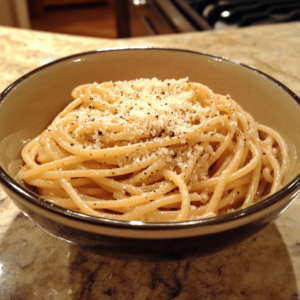
Giada De Laurentiis' cacio e pepe
Equipment
- Large pot for boiling pasta
- Colander
- Large skillet or sauté pan
- Wooden spoon or tongs
- Cheese grater
Ingredients
- 1 pound spaghetti or bucatini
- 2 cups finely grated Pecorino Romano cheese
- 2 tablespoons freshly ground black pepper
- Salt for pasta water
Instructions
- Bring a large pot of salted water to a boil. Cook pasta until al dente.
- Reserve 1 cup of pasta cooking water before draining.
- In a large skillet, toast black pepper over medium heat for 30 seconds.
- Add 1/2 cup of reserved pasta water to the skillet and bring to a simmer.
- Add cooked pasta to the skillet and toss to coat.
- Remove from heat and add grated Pecorino Romano, stirring until cheese melts.
- Add more pasta water if needed to create a creamy sauce.
- Serve immediately, garnished with extra cheese and pepper.


